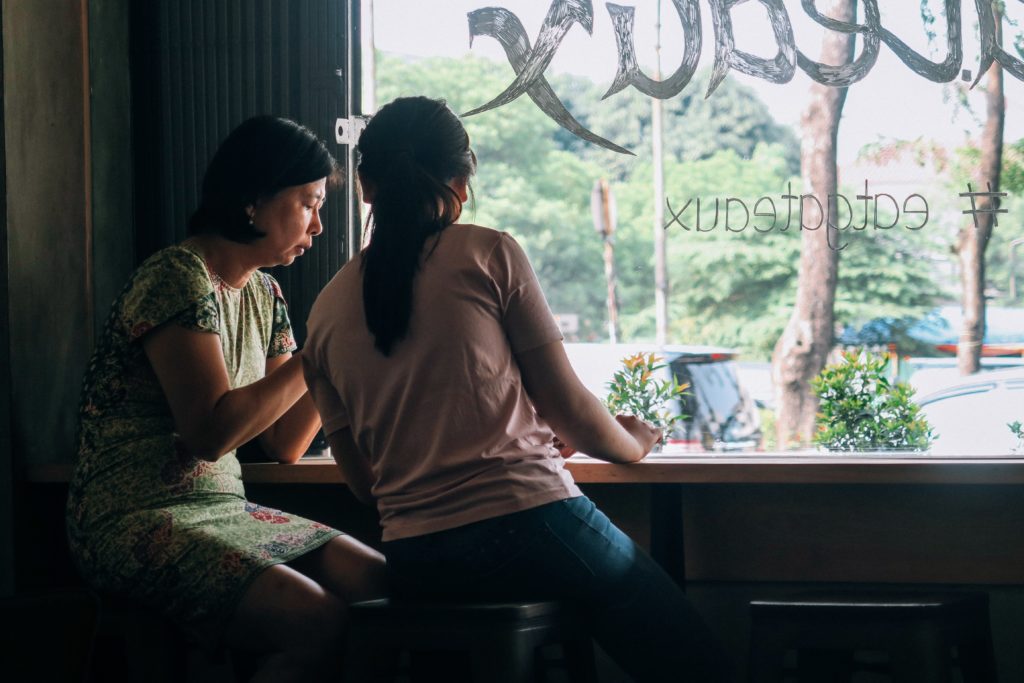Photo by Gabrielle Henderson on Unsplash (Edited by Monique Jones)
We already know times are tough. Because of COVID-19, people are practicing social distancing, trying to keep in contact with family members and friends, protecting themselves and attempting to keep their sanity at the same time. But something that’s making times tougher is the added stress of racism Asian Americans are experiencing because of the stereotype of COVID-19 being called “the Chinese Virus.”
You’ve probably seen videos and stories about people getting accosted, hurt, or even killed because racists are using the pandemic as an excuse to indulge in their racism.
You might know this is a problem, but you might be wondering how to fight the rising surge of xenophobia. With the amount of racism out there, you might feel like it’s too big of an issue to tackle, but you can empower yourself with the tips listed below to either help yourself or someone in need.
First, let’s establish what harassment is. According to Show Up: Your Guide to Bystander Intervention, a pamphlet created by The Center for Urban Pedagogy (CUP) and anti-harassment movement Hollaback!, harassment can look like:
- Intimidating looks and staring
- Comments about appearance
- Vulgar gestures, whistling and making noises
- Following someone
- Racist, xenophobic, homophobic, sexist and transphobic slurs
- Public exposure and masturbation
- Grabbing, touching and groping
- Defacing public spaces
With that said, you might be a person who comes upon one or more of these types of harassment, and you might feel like you don’t know what to do. Or, you might feel like y ou will make things worse. This type of insecurity and anxiety can lead people to not intervene when someone is being harassed. But the truth is that you have the power to stop harassment and help restore someone’s sense of themselves. CUP and Hollaback outline five tips to help people stop harassment, which they call the “5 Ds of Bystander Intervention.” They are:
- Distract: Take an indirect approach to de-escalate situation. Start a conversation with the target or find another way to draw attention away from them. Ask them for directions, the time, or drop something.
- Delegate: Get help from someone else. Find someone in a position of authority–like a bus driver, flight attendant, security guard, teacher or store manager–and ask for help. Gheck in with the person being harassed. You can ask them if they want you to call the police.
- Delay: After the incident is over, check in with the person who was harassed. You can also say: “Can I sit with you? Can I accompany you somewhere? What do you need?”
- Direct: Assess your safety first. Speak up about the harassment. Be firm and clear. You can also talk to the person being harassed about what’s going on. Ask: “Are you okay? Should I get help? Should we get out of here?”
- Document: It can be helpful for the target to have a video of the incident. Laws about recording in public vary, so check local laws first. Is anyone helping the person being harassed? If no use one of the other 4 Ds to help them. Tips for documenting public harassment: Keep a safe distance, film street signs or other landmarks that help identify the location, say the date and time. Always ask the person targeted what they want to do with the footage. Never post it online or use it without their permission. Keep your attention on the person being harassed–make sure anything you do is focused on supporting them.

Teaching Tolerance, a website run by the Southern Poverty Law Center, has a four-step process for standing up against racism and discrimination that’s similar to CUP and Hollaback’s suggestions. When dealing with people who are negatively biased, such as a person who believes all Asian Americans are responsible for COVID-19, Teaching Tolerance suggests to 1) Interrupt, 2) Question 3) Educate and 4) Echo.
To interrupt, states the organization,”means taking a time out. It shows the person you’re talking, texting or chatting with that what they’ve said is important enough to pause your conversation to address–that you need to talk about the racism before you talk about anything else.” A few phrases Teaching Tolerance suggests are:
“Hang on. I want to go back to what you called the virus.”
“Just a second–let’s get into your point that the virus is somebody’s fault.”
“Before we talk about that, I want to talk about the language you just used.”
Questioning is “to better understand why the person said what they did.” Some suggestions of questions to ask are:
“Why did you call it the ‘Chinese Coronavirus’?”
“Why do you think that?”
“Where did you get that information?”
Teaching Tolerance says “[t]he key to educating is to continue the conversation” and to explain what what a person said “needs rethinking.”
“That means that, to educate folks around racism associated with the coronavirus, we need to understand not only the virus but also the racism.” If someone doesn’t get why stereotyping the coronavirus as a Chinese or Asian virus is wrong, for instance, “you can educate them about the long history of stereotyping immigrants–and Asian people specifically–as people who bring disease. You can explain how this stereotype s both wrong and harmful.”
Echoing is simply providing support for others who speak up against racism. “It takes an effort to speak up against racist ideas and language. This is particular true of people who are targeted by that language. That’s why we need to have each other’s backs,” states the organization. “When someone else speaks up, echo them. Thank them, and emphasize or amplify their message any way you can. This not only encourages more speaking up–it also ensures that no one thinks your silence in response to biased ideas or language means you’re OK with it.”

Teaching Tolerance wrote that while it seems like echoing might be harder during this time of social distancing, there are still ways we can echo and provide support. “Online, we can re-share antiracist messages. And in chats or conversations, we can respond to offer support and agreement.”
There are also several resources developing online that are helping people share their experiences with racism and allows others to echo sentiments of respect and support. Asian Americans Advancing Justice have launched Stand Against Hatred, which allows people to upload their experiences with coronavirus-fueled racism and educate others on how racism affects people’s daily lives. Wash The Hate is an initiative created to combat racism by encouraging people to record a 20-second video while washing their hands and sharing a story of how COVID-19 as affected their lives. Or, if you are uncomfortable with posting a video, people can direct message the group on social media and their story will be shared anonymously. Whether you post a video or send a message, all stories will be hashtagged #WashTheHate so others can read and support through retweets, comments and more.
Wash The Hate also encourages people to report hate crimes to the Asian Pacific Police & Planning Council (A3PCON) or OCA National, which will inform the government of the rate of hate crimes Asian Americans are enduring because of the coronavirus (or anything else).
So to recap, here are the 12 ways you can fight back against COVID-19 racism:
- Distract
- Delegate
- Delay
- Direct
- Document
- Interrupt
- Question
- Educate
- Echo
- Document instances of racism via Stand Against Hatred
- Upload a video or share your story with Wash The Hate
- Report hate crimes to A3PCON or OCA National
Other sites that could offer help:
Not In Our Town–Community Resources
Asian Americans Advancing Justice–Coronavirus/COVID-19 Resources to Stand Against Racism
By implementing these suggestions, calling out racism and providing support to others, we can flatten the curve of coronavirus-fueled racism.
